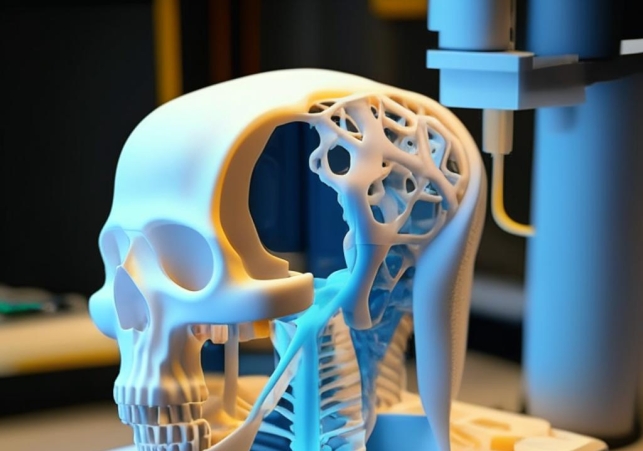
3D Printing in Medical & Healthcare
3D printing has made significant advancements in the field of medicine and healthcare, offering new possibilities for personalized patient care, surgical planning, medical education, and the production of custom medical devices. Here are some notable applications of 3D printing in medical and healthcare:
-
Customized Implants and Prosthetics: 3D printing allows for the production of patient-specific implants and prosthetics. By using patient scans, such as CT or MRI, medical professionals can design and manufacture implants or prosthetic limbs that precisely fit an individual's anatomy. This customization improves comfort, functionality, and patient outcomes.
-
Surgical Planning and Training: Surgeons can use 3D-printed anatomical models to plan and practice complex surgeries before entering the operating room. These models provide a tangible representation of patient-specific anatomy, aiding in preoperative visualization and enhancing surgical accuracy. Additionally, medical students and residents can use 3D-printed models for educational purposes.
-
Biofabrication and Tissue Engineering: 3D bioprinting combines living cells, biomaterials, and growth factors to create functional tissues and organs. Although still in the early stages of development, researchers are making progress in bioprinting applications, such as skin grafts, cartilage, blood vessels, and even whole organs. This technology holds promise for regenerative medicine and organ transplantation.
-
Pharmaceutical Research and Drug Delivery: 3D printing enables the fabrication of personalized drug delivery systems, including tablets with complex geometries and controlled release profiles. It also aids in the development of drug prototypes and dosage forms for preclinical testing, enhancing the efficiency of pharmaceutical research and development.
-
Medical Devices and Instrumentation: 3D printing allows for the production of customized medical devices, such as orthopedic implants, hearing aids, dental aligners, and surgical instruments. These devices can be tailored to an individual's specific needs, improving patient comfort and treatment outcomes.
-
Anatomical Models for Patient Education: 3D-printed anatomical models are valuable tools for patient education. They provide a tactile representation of a patient's condition, enabling clearer communication between healthcare providers and patients. These models enhance patient understanding of their diagnosis, treatment options, and potential surgical procedures.
-
Prosthetic and Orthotic Development: 3D printing has revolutionized the production of prosthetic limbs and orthotic devices. The technology allows for faster, more affordable, and highly customizable designs. 3D-printed prosthetics and orthotics can be tailored to an individual's anatomy and preferences, improving comfort and mobility.
-
Surgical Guides and Implant Templates: Surgeons can use 3D-printed surgical guides and implant templates to improve the precision and accuracy of surgical procedures. These guides assist in proper implant placement, reducing surgical time, improving outcomes, and minimizing complications.
-
Dental Applications: 3D printing has found extensive use in dentistry, including the production of dental models, crowns, bridges, aligners, and surgical guides. It streamlines the dental workflow, enhances treatment planning, and enables more efficient and accurate restorations.
These are just a few examples of how 3D printing is transforming the medical and healthcare sectors. The technology's ability to create customized solutions, improve patient care, and advance medical research makes it a promising tool for the future of healthcare

